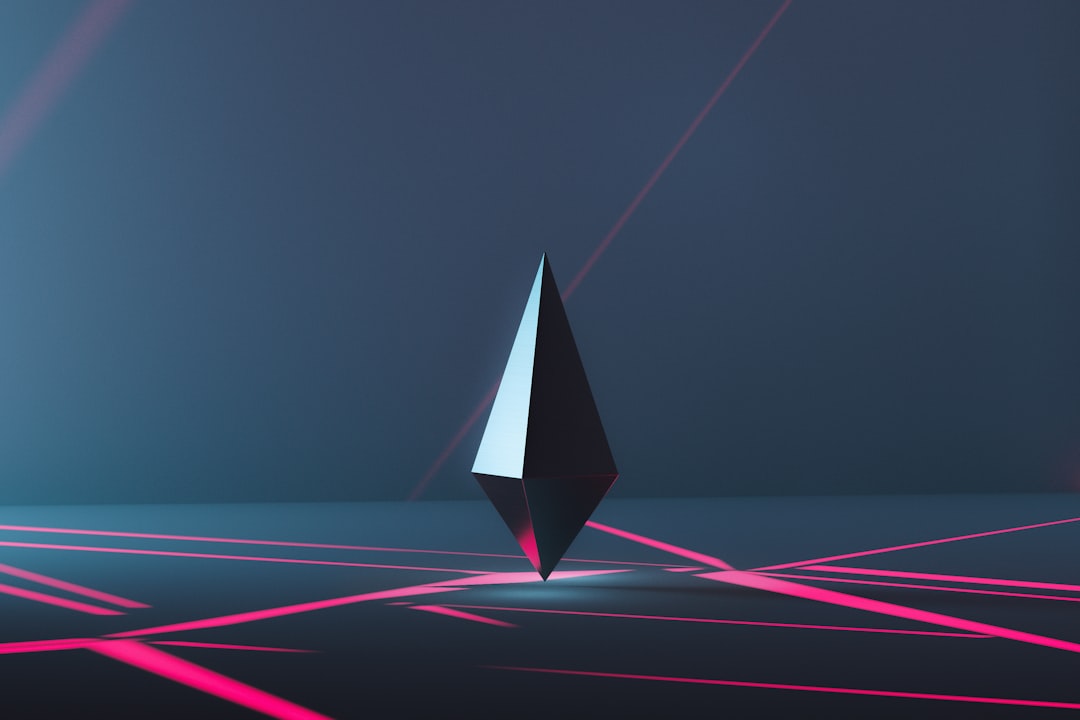Art has been around since the dawn of humanity, and its value has only increased with time. However, the world of art has dramatically changed with the advent of cryptocurrencies and blockchain technology. With the rise of digital art, a new form of art has emerged known as crypto art.
Crypto art is a type of digital art that is created using blockchain technology, making it unique and non-fungible. It is decentralized and cannot be duplicated, ensuring that each piece is one-of-a-kind. This feature has made it increasingly popular among collectors, artists, and art enthusiasts.
The emergence of crypto art has revolutionized the way we think about art by removing barriers that traditional art has faced. No longer do artists need to rely on traditional art markets to display their work; they can now showcase their art on online platforms and auction houses. Moreover, these platforms enable artists to receive full ownership of their art, as crypto art allows for easy tracking of ownership history.
Crypto art has also created new opportunities for collectors, where they can now buy and trade digital art through cryptocurrencies. With the use of blockchain,s collectors feel confident in owning unique art pieces that can become an investment for the future.
The popularity of crypto art can also be attributed to its inclusivity, as it allows for a wide range of artists to showcase their talent. The low barriers of entry for creating and sharing digital art makes it possible for artists from underrepresented groups to gain a foothold in the market.
All in all, the emergence of crypto art is marking a new era in the art world. It is transforming the way artists create, showcase, and monetize their work, and it promises an exciting future for art enthusiasts and collectors alike.
Breaking Down Blockchain: How it has Revolutionized the Art World
Blockchain is a decentralized digital ledger technology that is used to maintain and record transactions across a network. It is especially important for crypto art because it is a secure and transparent way of exchanging artwork ownership and value.
In the traditional art world, artists and galleries depend on a complex network of intermediaries such as dealers, auction houses, and museums to facilitate the exchange of artwork. This process can be slow, bureaucratic, and expensive.
Blockchain technology changes this. It eliminates the need for intermediaries because it allows artwork to be exchanged securely and transparently between the buyer and the seller. Blockchain provides an unalterable record of every transaction that happens on the network, creating a trusted and tamper-proof system.
In addition, blockchain technology allows for the creation of unique and rare digital assets that can be easily traded. These assets can be tokens that represent ownership and value of artwork, and they are called non-fungible tokens (NFTs). NFTs are unique digital assets that are indivisible and cannot be exchanged or replaced with anything else.
NFTs have revolutionized the art world because they provide a way for artists to monetize their digital artworks without diminishing their value or uniqueness. Moreover, NFTs allow for the possibility of art collectors to own artwork in a digital form.
Finally, blockchain technology also benefits the art world by providing opportunities for artists and collectors to contribute to the transparency of the contemporary art market, an issue which has traditionally lacked transparency. Blockchain-based art marketplaces are trustworthy and provide a fairer and more efficient way of conducting business.
In summary, blockchain has revolutionized the art world and opened up new possibilities and opportunities. It provides a secure and transparent way of exchanging artwork ownership and value, eliminates intermediaries, creates unique and rare digital assets, and contributes to the transparency of the contemporary art market. Crypto art is a promising new field, and blockchain is at the heart of its success.
The Demand for Digital Assets: The Rise of Crypto Art Marketplaces
The world of art has changed drastically over the past decade, with the rise of blockchain technology and the emergence of crypto art. As digital assets and cryptocurrencies continue to take over the global marketplace, the demand for crypto art has skyrocketed like never before.
Crypto art marketplaces have become the go-to place for artists, collectors, and buyers who are interested in acquiring and selling unique digital art pieces. These marketplaces have opened up a whole new world for artists to showcase their talent, earn recognition, and reach a wider audience.
One particular reason for the popularity of crypto art marketplaces is that the digital art can be purchased, sold, and shared without the need for intermediaries or traditional auction houses, resulting in a more democratized platform for artists and collectors alike. The decentralized nature of blockchain technology allows for the creation and distribution of digital art pieces, ensuring that no one party can control the market, and there are no legal intermediaries required.
The emergence of crypto art marketplaces has also significantly reduced the risk of forgeries, which have historically been a major concern in the art world. When digital artworks are uploaded to the blockchain, they are authenticated using cryptographic tools to ensure that they are original pieces, which is why these marketplaces are gaining the trust of the public.
Additionally, crypto art marketplaces provide a more accessible and affordable platform for art enthusiasts to start their own digital art collection. Unlike traditional art auctions, these marketplaces allow buyers to purchase digital art pieces using cryptocurrencies, broadening access for those who were previously priced out of the traditional art world.
As the demand for crypto art continues to grow, marketplaces like SuperRare, Nifty Gateway and OpenSea have emerged as leading venues for buying and selling digital art.
In conclusion, the demand for digital assets has revolutionized the art world, leading to the emergence of crypto art marketplaces. The decentralized nature of blockchain technology, the democratization of the industry, and the reduction of risk associated with forgery have all contributed to the popularity of these marketplaces. As we continue to see advancements in blockchain technology, it is clear that the crypto art industry is here to stay, and it will continue to flourish in the years to come.
Crypto art marketplaces have become the go-to place for artists, collectors, and buyers who are interested in acquiring and selling unique digital art pieces.
The Role of NFTs in Crypto Art: Tokenizing Ownership and Value
When it comes to the intersection of art and blockchain, one term you’ll hear come up often is NFT. But what exactly are NFTs, and how do they tie into the world of crypto art?
NFTs, or non-fungible tokens, are unique digital assets that are stored on a blockchain. These tokens are one-of-a-kind, meaning that they cannot be replicated or divided into smaller units. This uniqueness is what makes NFTs valuable – the blockchain allows for verifiable ownership and provenance of a particular asset.
So how do NFTs tie into the world of crypto art? In recent years, artists have been turning to the blockchain as a way to monetize their digital creations. By creating an NFT of a piece of art, an artist can verify ownership and transfer of the work to a collector. This allows for a new level of transparency and security in the buying and selling of digital art.
But NFTs don’t just offer a new way to transfer ownership – they also allow for value to be attached to digital assets. With NFTs, the value of a piece of art is tied directly to its provenance and the fact that it is one-of-a-kind. This has led to some high-profile sales in the world of crypto art – in March of 2021, a digital artwork by artist Beeple sold for a record-breaking $69 million at Christie’s auction house.
Critics of NFTs argue that their value is purely speculative, and that the hype around them is not grounded in any real-world applications. Others worry about the environmental impact of the energy-intensive blockchain technology. However, proponents of NFTs see them as a way to democratize the art world, allowing for artists to monetize their work in a way that was previously impossible.
Overall, the emergence of NFTs has had a significant impact on the world of crypto art. By tokenizing ownership and value, NFTs have created a new way for artists to monetize their digital creations and for collectors to invest in one-of-a-kind works. As the world of blockchain and crypto art continue to evolve, it will be interesting to see how NFTs will continue to shape the market.
However, proponents of NFTs see them as a way to democratize the art world, allowing for artists to monetize their work in a way that was previously impossible.
Crypto Art Impact and Future Implications: Advancements and Criticisms
As the world of crypto art continues to grow, it has become clear that the implications of this new digital art market extend far beyond just the buying and selling of unique digital assets. In fact, the emergence of crypto art has sparked debates regarding the nature of art, the role of technology in creativity, and even the future of the art world as we know it.
One of the most significant impacts of crypto art is the democratization of the art world. Historically, only a privileged few could afford to purchase and collect expensive art pieces. With crypto art, however, anyone with a digital wallet can become a collector, regardless of their financial status. This has opened up a new world of opportunities for both artists and collectors, as it allows for a more inclusive and diverse range of individuals to participate in the art world.
Another impact of crypto art is the increased attention it has brought to the role of technology in art. The use of blockchain technology and NFTs has allowed for new means of verifying ownership and authenticity, which has been a critical issue in the traditional art market for centuries. This development has also led to a questioning of the very nature of art and its value. Critics argue that the mere fact of being unique and scarce does not necessarily make a digital asset valuable or art.
Additionally, there have been concerns raised about the environmental impact of the crypto art market. The mining of cryptocurrencies and the high energy consumption involved in the blockchain transaction process has led to criticism of the carbon footprint of the industry.
Despite these criticisms, the potential for crypto art to revolutionize the art world cannot be ignored. The use of blockchain technology has allowed for artists to earn royalties from resales, a right which is often not granted in traditional art markets. Additionally, the transparency and accessibility of the market have made it easier for artists to promote and sell their work without the need for intermediaries.
Overall, the world of crypto art presents both advancements and criticisms, but it is undoubtedly an exciting time to be a part of this new digital art market. As we continue to explore the potential and implications of this market, we will undoubtedly see further changes in the way we view and value art, as well as a new era of inclusivity and diversity in the art world.
This development has also led to a questioning of the very nature of art and its value.
Conclusion: The Promise and Potential of Crypto Art for Artists and Collectors
Crypto art has become a prominent and rapidly growing field that represents the marriage of art and blockchain technology. It has opened up a world of possibilities for artists, collectors, and investors alike.
For artists, it provides a platform for them to sell their digital artwork and earn a fair price for their creations. The use of blockchain technology ensures that artists receive their share of the sale, bypassing the traditional middlemen, galleries, and auction houses that would take a significant cut. It also offers the potential for greater exposure and recognition, as artists can sell their work on global platforms without geographical limitations.
For collectors and investors, crypto art provides an opportunity to invest in art that is not only unique but also traceable and immutable. The use of NFTs ensures that the artwork’s value and ownership are transparent and secure on a decentralized ledger. Collectors can display their ownership and connection to the artwork for all to see, creating a sense of prestige and exclusivity.
The rise of crypto art marketplaces provides a platform for artists and collectors to come together and transact without the need for intermediaries. It has the potential to change the art world’s dynamics, disrupting traditional methods of selling and buying artwork. It also offers the potential for increased accessibility and affordability, as collectors can purchase fractional ownership in a piece of art, making it more accessible to a broader audience.
However, as with any new technology, there are limitations and criticisms of crypto art. Some critics argue that it focuses too much on the speculative aspect of investing rather than the art’s intrinsic value. Others worry about the environmental impact of NFTs and blockchain technology. It is important to address these challenges and explore ways to make crypto art a more sustainable and valuable market.
In conclusion, the emergence of crypto art represents an exciting and promising development that has the potential to revolutionize the art world. It offers a new way of creating, distributing, and investing in art that is fair, secure, and accessible. As the market continues to evolve and mature, it will be interesting to see how it affects the art world’s traditional dynamics and what new opportunities it will bring.
Crypto Art: The Future of Art Collecting and Investing
Crypto art has taken the art world by storm, ushering in a new era where digital art can now be bought and sold with the same respect as traditional art pieces. The emergence of blockchain technology has been instrumental in this change, providing an improved platform for cryptographically secure transactions and verified ownership rights. In the recent past, we have seen the rise of crypto art and the development of crypto art marketplaces, where people can buy and sell their digital art pieces.
Blockchain technology has opened up new opportunities for creative artists who would otherwise not have access to the traditional art market. The advancement of blockchain technology has led to the creation of unique digital assets known as non-fungible tokens (NFTs). NFTs are unique, digital assets that have established ownership and value. Artists can use NFTs to determine how many limited copies of a particular piece of work will be available. This limited availability adds to the perceived value of the digital asset, much like how physical artwork is valued based on rarity, demand and artistic significance.
The emergence of NFTs has also made it possible to establish provenance for digital artworks, something which was previously a significant problem. When purchasing an artwork, the authentication and ownership of the piece usually rest on the authenticity of the physical signature, and the buyer has to rely on the trust between seller and buyer. Cypto art solves this issue and makes it easier to validate authenticity, provenance, and ownership of digital assets through NFTs.
The rise of crypto art marketplaces like Nifty Gateway, SuperRare, Rarible, and OpenSea has created new opportunities for both artists and collectors alike. These marketplaces serve as a marketplace for buyers and sellers to trade digital assets securely. They ensure ease of trade, as the transactions are secured on the blockchain and cannot be tampered with. Moreover, transactions can also serve as a record of proof of ownership and payment.
Crypto art marketplaces have created an entirely new space for art collectors to invest in, rather than buying traditional physical art. The digital age has made it possible for enthusiasts to collect art in a new way, which is just as satisfying as purchasing physical art pieces. The digital age has given us the option to utilize our tech to create cultural value through digital art, something that was previously unachievable.
As with any new technological advancement, crypto art has seen its fair share of criticisms, with some detractors seeing it as a passing trend that won’t last long. However, it is becoming increasingly evident that crypto art is here to stay, with leading art institutions like the Museum of Contemporary Digital Art recognizing and lending legitimacy to the medium. It is clear that crypto art, NFTs, and crypto art marketplaces will take the art world by storm, and this is just the beginning.
Conclusion
Artists have already begun to explore the possibilities of crypto art, and collectors worldwide are embracing this new medium of art. The success of crypto art is a win-win situation for both artists and collectors. Artists get the recognition they deserve, while collectors have the opportunity to invest in a new form of art, which can potentially prove to be way more valuable than physical art in the future. It is safe to say that the possibilities with crypto art are endless, and we can’t wait to see what the future holds for this exciting new medium of art.





